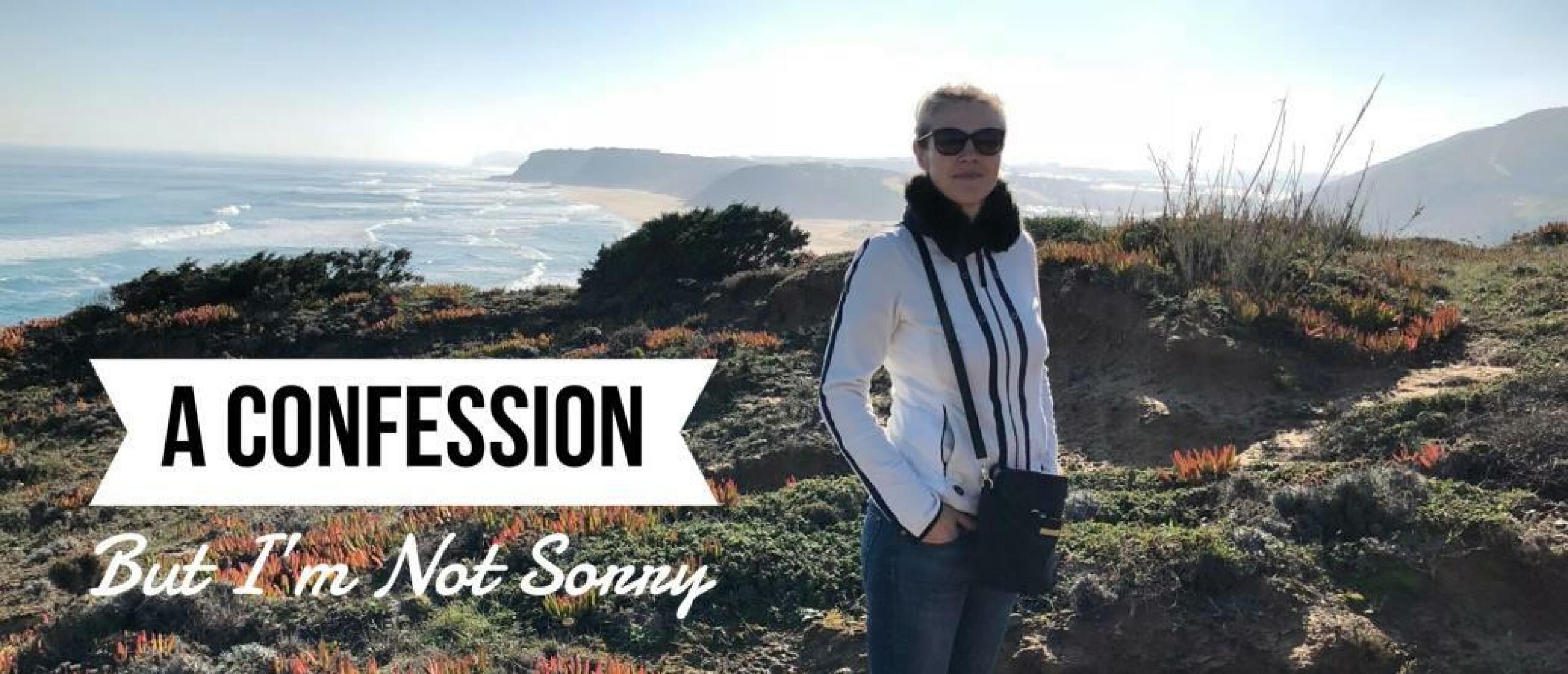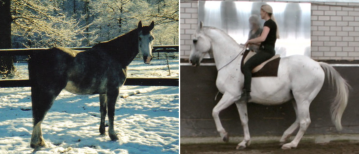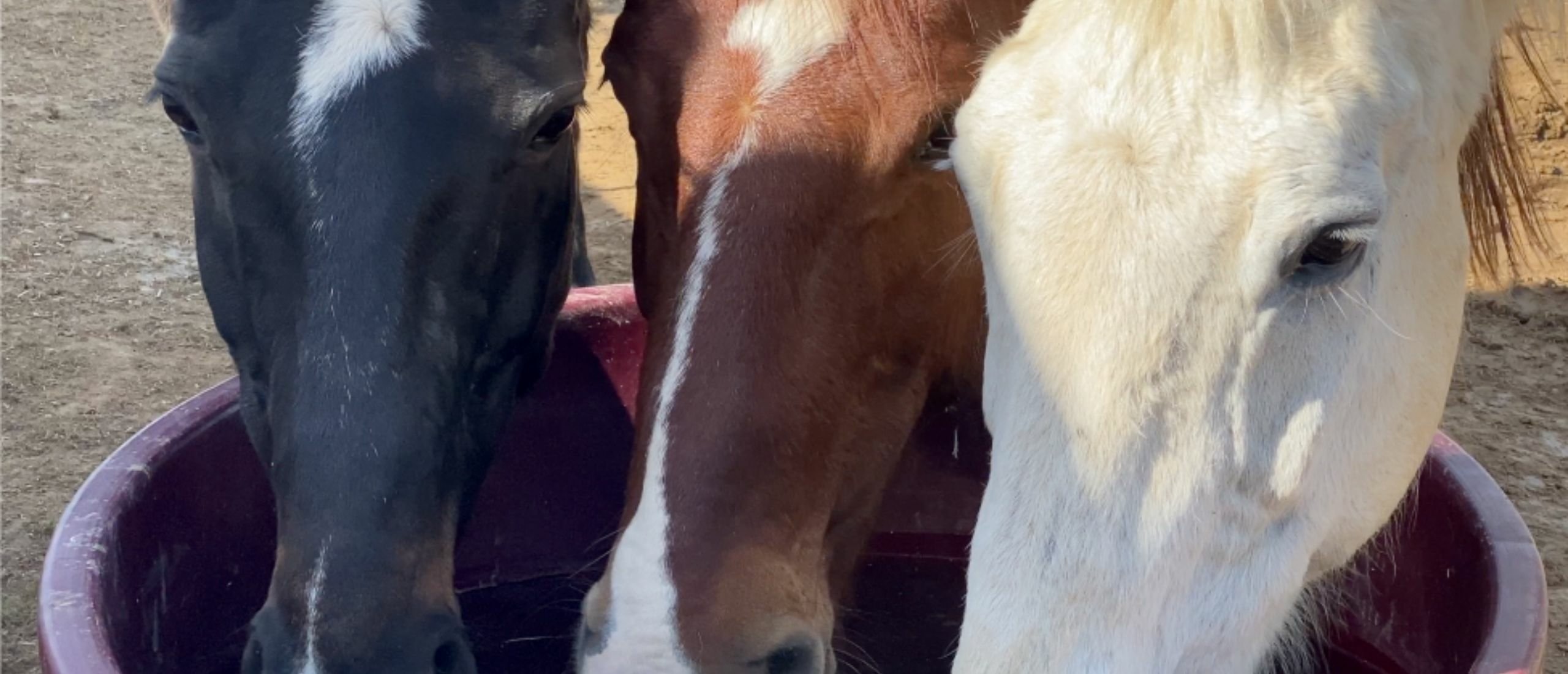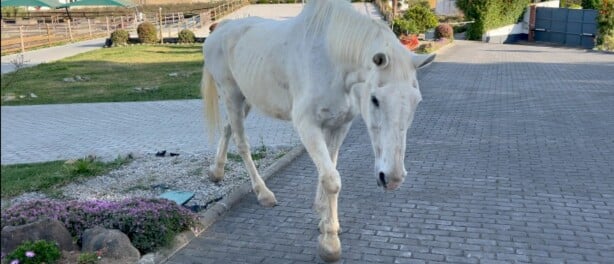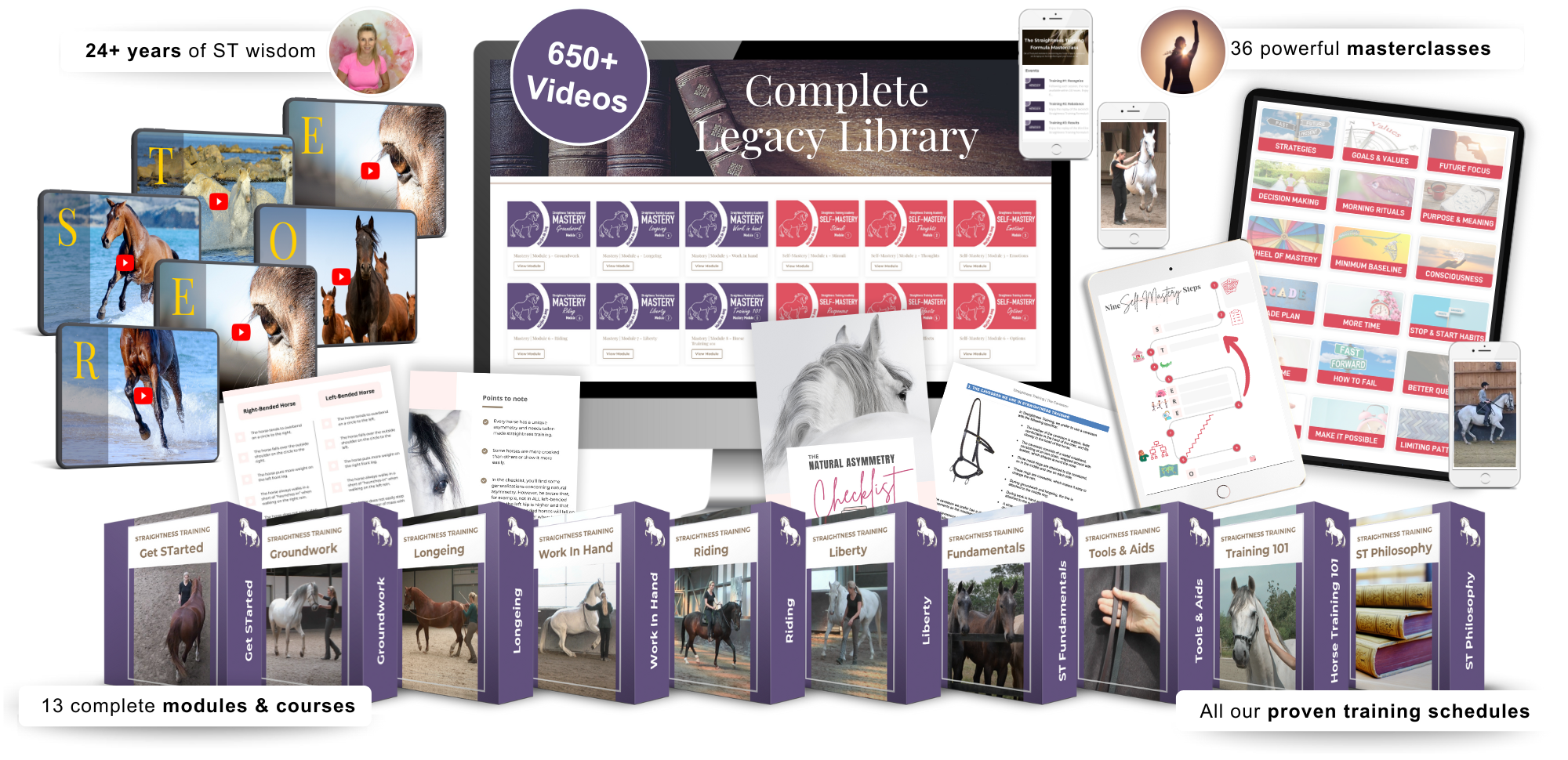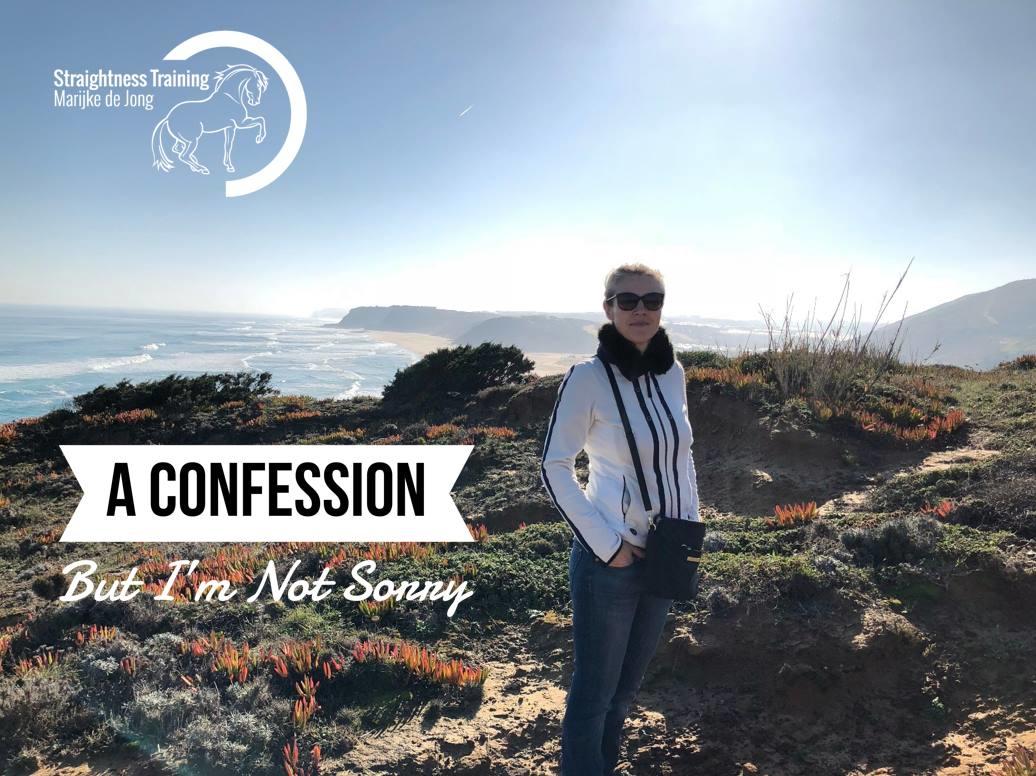 Confession: I did not train my horses for 10 months. And that might sound weird for a professional horse trainer. People assume that you train all day every day... That you keep the momentum... That it’s never a struggle to stay on track. But you know what? In practice, professional horse trainers are just human. And nobody's perfect, including me! (OK ...especially me.)
Confession: I did not train my horses for 10 months. And that might sound weird for a professional horse trainer. People assume that you train all day every day... That you keep the momentum... That it’s never a struggle to stay on track. But you know what? In practice, professional horse trainers are just human. And nobody's perfect, including me! (OK ...especially me.) 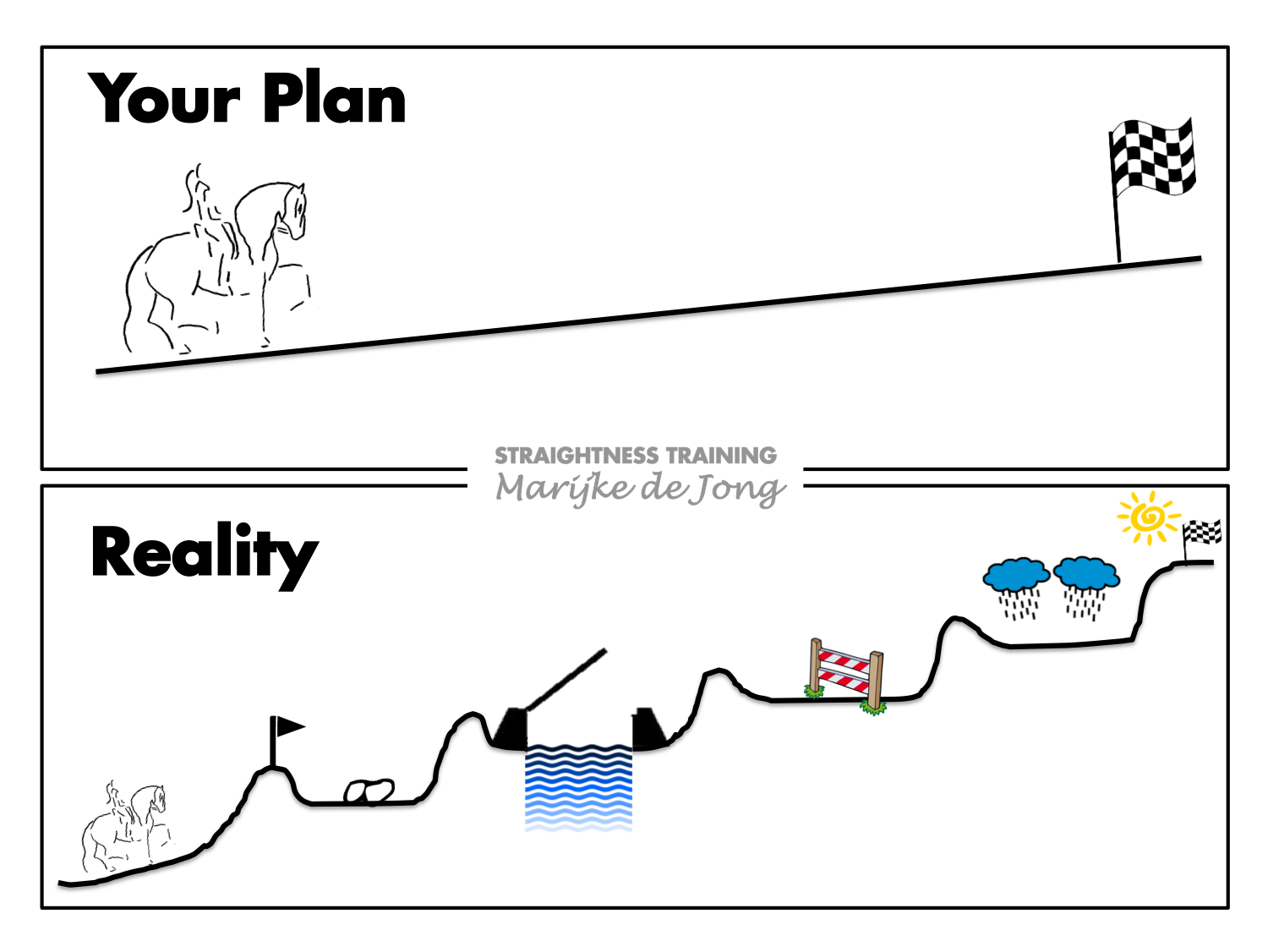 Now by nature, I am an optimistic planner. That's why I always underestimate the time needed to complete things. And I always underestimate the hurdles that I have to face along the way to get where I want to be. So let me share some of these hurdles with you and explain why I didn't train my horses for 10 months - and why I'm not sorry:
Now by nature, I am an optimistic planner. That's why I always underestimate the time needed to complete things. And I always underestimate the hurdles that I have to face along the way to get where I want to be. So let me share some of these hurdles with you and explain why I didn't train my horses for 10 months - and why I'm not sorry:
Moving to Portugal
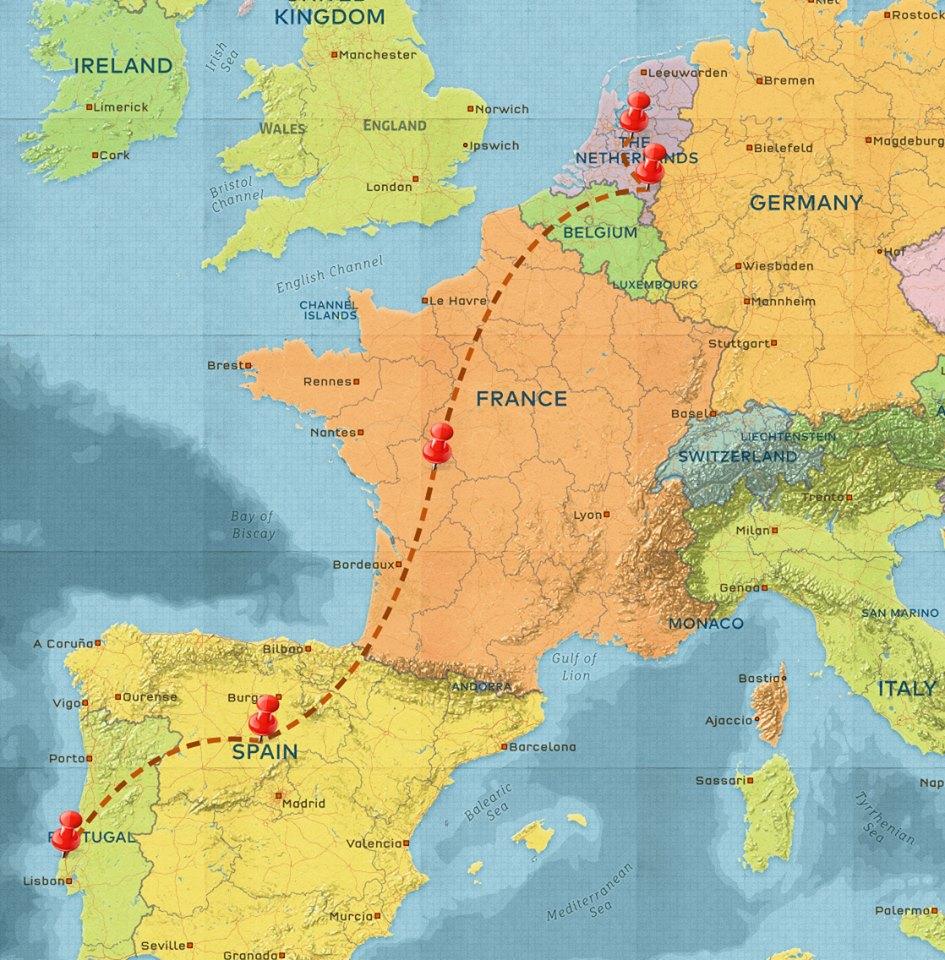 Last September 2017, we moved to Portugal with our five horses - Maestro, Romanesque, Prince Elmelund, Toronto, and El Blanco. And in case you missed this blog and video series, here they are:
Last September 2017, we moved to Portugal with our five horses - Maestro, Romanesque, Prince Elmelund, Toronto, and El Blanco. And in case you missed this blog and video series, here they are:
- ► Turning Dreams Into Reality: Why Portugal? >>
- ► Day 1: Start In The Netherlands >>
- ► Day 2: On Our Way To France >>
- ► Day 3: Transport To Spain >>
- ► Day 4: Arrival In Portugal >>
- ► Settling Down In Portugal >>
To make a long story short: The moving was a happy occasion, but a total disruption of our normal routine. We had to sell our house, pack all our stuff, leave our country, then unpack in a new country. So it took a while before we could get established into our new home. Besides that, we moved to a place with no training facilities... That was a sort of hurdle, but there were more to come...
The Hurdles...
To take the hurdle of having no riding arena, we had two plans:
- To have an outdoor arena up and running asap.
- In the meantime, I figured out that I could train on the flat grass area behind the house.
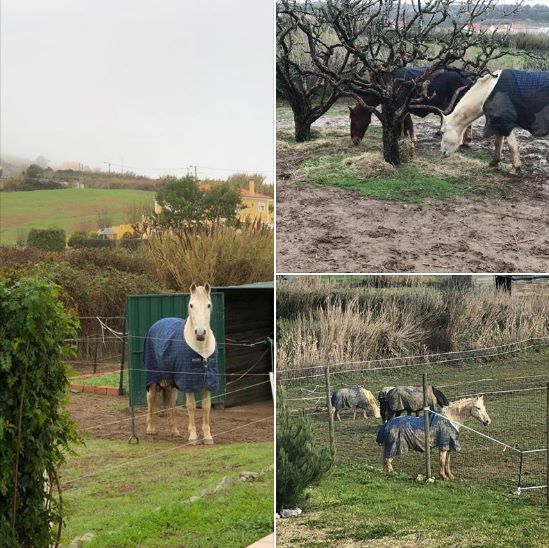 Now, normally, the climate of Portugal is temperate... And it was said that only in November to March, sometimes rainfall can occur... However, this year, it had a period of the heaviest rain ever since 1936! And it kept on raining until mid-April! So this had two consequences:
Now, normally, the climate of Portugal is temperate... And it was said that only in November to March, sometimes rainfall can occur... However, this year, it had a period of the heaviest rain ever since 1936! And it kept on raining until mid-April! So this had two consequences:
- The machines could not prepare the land and build the riding arena because it was too muddy.
- And I could not train on the grassland because it was too slippery.
So John Lennon was right: "Life is what's happening to you when making other plans." Facing and dealing with setbacks is a part of life for all of us. And sometimes when we think we're ready to unleash on the world, the universe has other plans! Therefore, I had to wait... And practice patience... Now, of course, we investigated alternatives to train in nearby indoor arenas. 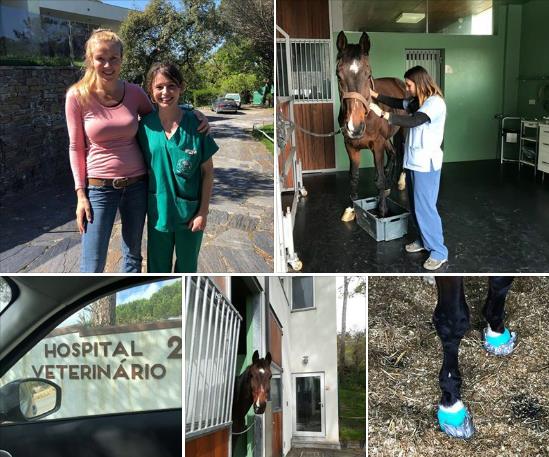 But then Toronto got anabscess in both his front hooves, and he had to the go to the hospital for a few weeks. The marvelous Dr. Maria João Oliveira and Melanie Santos, and the fabulous farriers Dr. Diogo Gabriel Macedo and Carlos Franco put all their heart and soul in getting him literally back on his feet - and they succeeded! Anyway, after taking all circumstances in consideration, we decided to give the horses a break this winter, and to switch priorities.
But then Toronto got anabscess in both his front hooves, and he had to the go to the hospital for a few weeks. The marvelous Dr. Maria João Oliveira and Melanie Santos, and the fabulous farriers Dr. Diogo Gabriel Macedo and Carlos Franco put all their heart and soul in getting him literally back on his feet - and they succeeded! Anyway, after taking all circumstances in consideration, we decided to give the horses a break this winter, and to switch priorities.
Seeing the 'Good' in the 'Bad'...
You know, always something 'good' comes out of something 'bad'. At least, we can choose to find something good in our setbacks - and that was that we had time for other things:
- So we started a new Mastery Class in December 2017 - (and we're about to start the 2018 Class next September!)
- We focused on CANI-ing the ST Evaluation Program to serve our Mastery Students even better.
- I coached ST Instructors Rebecca Gilbert and Zaneta Georgiades online towards Grade 4.
- I gave a few live Mastermind Webinars to share Rebecca's and Zaneta's coaching with all the other Mastery Students so we could all learn from their fascinating journeys.
- I wrote a whole series of new articles and blog posts to help STudents freeze their ice below the sea level, because Mastery is 90% about attitude and emotions, and 10% about knowledge and skills.
Besides these benefits, the rain was the greatest gift to Portugal, because its nature really needed some water to recover after the deadly wildfires in 2017, which had catastrophic consequences and ravaged over 30,000 hectares of forest. So overall, I'm not sorry about the rain and that we couldn't train. Because it also had another significant 'by-product'...
More Benefits:
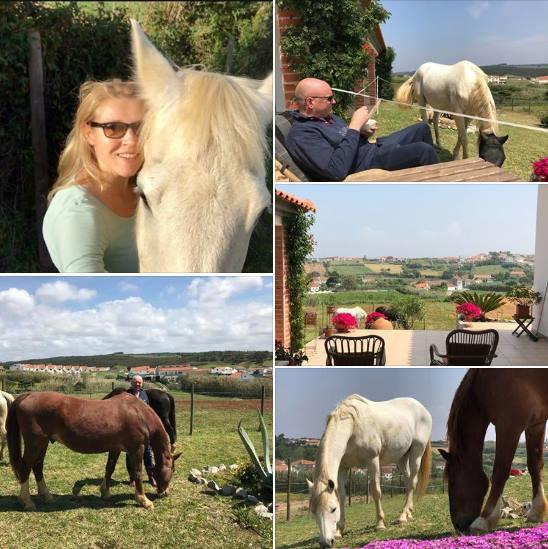 Another benefit was that our 'Relationship Bank Account' increased. What does this mean? Well, it relates on how my horses value me and to the interactions between my horses and me:
Another benefit was that our 'Relationship Bank Account' increased. What does this mean? Well, it relates on how my horses value me and to the interactions between my horses and me:
- These interactions will either 'benefit' our relationship,
- or it will 'cost' me something,
- or the effect will be 'neutral' on our relationship.
Now, since every day, every few hours, I had an interaction moment with my horses in connection with either feeding, or grooming, or moving to another pasture, or they could cut the grass in our garden, and so on. So in a way, I was their supplier of 'gifts' which made our relationship bank account very large and positive. Besides that, we have spent a lot of time hanging out, doing nothing, just being and acclimatizing, which was very fruitful on a mental level for both us humans and our horses. And they had their funny 5 minutes every now and then:
So they kept themselves busy, so again, I'm not sorry that we couldn't train for several months. Nevertheless, I was very happy, that one day in May...
It's On!
We could finally make a start with the construction of the riding arena! Now, I documented the whole process - collecting pics and vids - because to me it was a fascinating process. That's because I saw many parallels with Straightness Training: First, everything starts with a dream. Secondly, to make a dream come true, it has to be converted into a plan.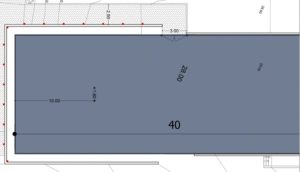 So we started to create a plan together with the amazing architectHelena Machado Morais. The whole arena had to be built up from scratch. At first, a strong, solid, long-lasting fundament was created. And this was done layer by layer, without rushing, just taking the time it takes. Then, along the way, we had to adjust the theoretical plan to the practical circumstances, and change our approach - what's new, nothing evolves in a straight line. So we had some moments of delay, and had to practice patience again. But it was worth it! And it was a fascinating process to observe because of...
So we started to create a plan together with the amazing architectHelena Machado Morais. The whole arena had to be built up from scratch. At first, a strong, solid, long-lasting fundament was created. And this was done layer by layer, without rushing, just taking the time it takes. Then, along the way, we had to adjust the theoretical plan to the practical circumstances, and change our approach - what's new, nothing evolves in a straight line. So we had some moments of delay, and had to practice patience again. But it was worth it! And it was a fascinating process to observe because of...
Ikigai
Now what impressed me most was that all parties - from the architect, to the constructors of the walls, the fence, the floor - worked in an 'Ikigai' way! In Japanese culture, they say 'Ikigai' is the reason to jump out of bed each morning - it's what makes you happy, keeps you motivated, and what brings fulfillment. So all teams worked with a mission, vocation, profession, and passion, and:
- They love what they're doing,
- They are good at it,
- They do what the world needs,
- And what they can be paid for.
And because they worked with those drives, all parties were very motivated, dedicated, and precise in their work - which resulted in true craftmanship and a piece of art. And that's another parallel with Straightness Training: We also encourage our students to follow their bliss and to look for meaning and fulfillment in what they do daily, plus, to create their own masterpiece.
Construction of the Riding Arena
So the development of the riding arena had very similarities with Straightness Training. At the start, it seemed like a huge project, but if you chunk the big elephant in bite-sized portions, eventually a great result can be accomplished. And it was fascinating to see how something was built op from totally nothing, nada, niente, zero, scratch... How little improvements add up... 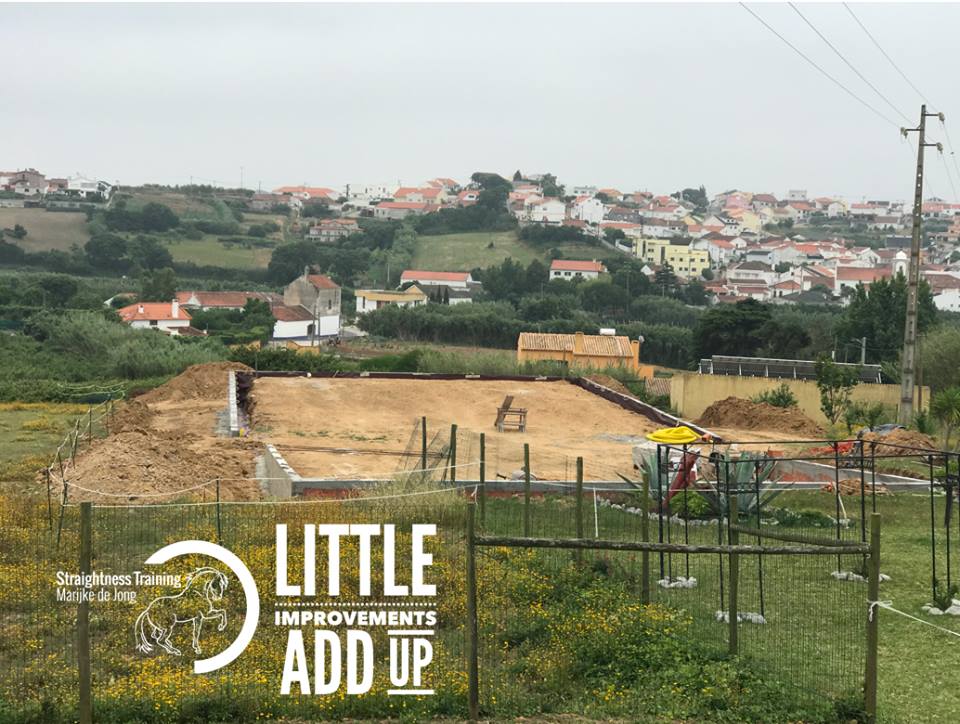 How small steps make a profound difference in the end... How a great piece of art is composed out of small actions that are done with a high level of preciseness and eye for details! Because every individual task was executed with such energy, drive, passion, and Best Aikido, which breathed and echoed the attitude that is needed in Straightness Training as well. So I found it a fun and fascinating process to watch, because it reflects a sort of how we can experience ST. Therefore, I shared some in-depth, but temporary stories about the riding arena recently on Facebook, Instagram and Youtube, and on this blog you can find the 'recap' of the construction. However, I can totally understand, that not everybody is interested in this recap - then just skip the rest of this page ;-) But for those who are interested, here is an overview of the recap content, and just click the link to jump to a topic:
How small steps make a profound difference in the end... How a great piece of art is composed out of small actions that are done with a high level of preciseness and eye for details! Because every individual task was executed with such energy, drive, passion, and Best Aikido, which breathed and echoed the attitude that is needed in Straightness Training as well. So I found it a fun and fascinating process to watch, because it reflects a sort of how we can experience ST. Therefore, I shared some in-depth, but temporary stories about the riding arena recently on Facebook, Instagram and Youtube, and on this blog you can find the 'recap' of the construction. However, I can totally understand, that not everybody is interested in this recap - then just skip the rest of this page ;-) But for those who are interested, here is an overview of the recap content, and just click the link to jump to a topic:
- 1. Preparation by the Horses - September/October 2017
- 2. Leveling the Floor - May 2018
- 3. Building the Rear-End Wall - June 2018
- 4. Building the Front-End Wall - June 2018
- 5. Building the Fence - July 2018
- 6. Integrating the Ebb & Flow System - July 2018
- 7. Before/After pictures
- 8. Complete Overview Video
- 9. Back On Track - August 2018
- 10 Months Out Of The Running
- 11. Let's Start From Scratch
1. Preparation By The Horses - 2017
Now it all started with the question: Where do we position the riding arena? And we imagined that the perfect place for the outdoor was - what we called - 'the grapevine'. We named that area like that since it had no less than eight grape bushes ;-) . And that piece of land was a sort of 'unused' area with no real purpose. So we decided that the horses could eat the whole area to prepare it for construction: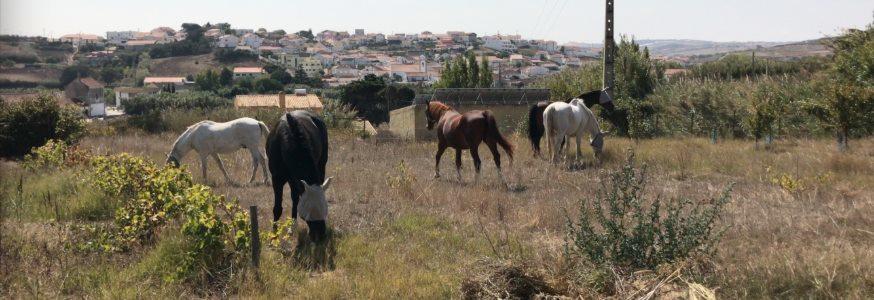 And the 'grasshoppers' did a great job:
And the 'grasshoppers' did a great job: Here's a sneak 'before-after' peak on the outdoor - seen from our living room window:
Here's a sneak 'before-after' peak on the outdoor - seen from our living room window: 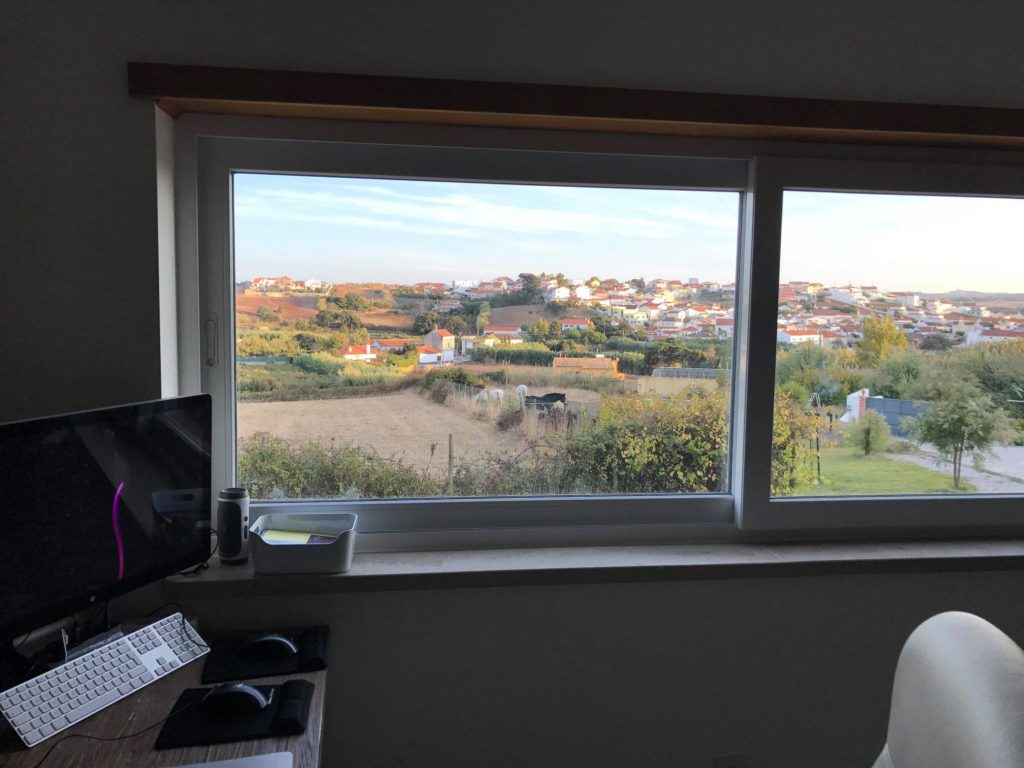
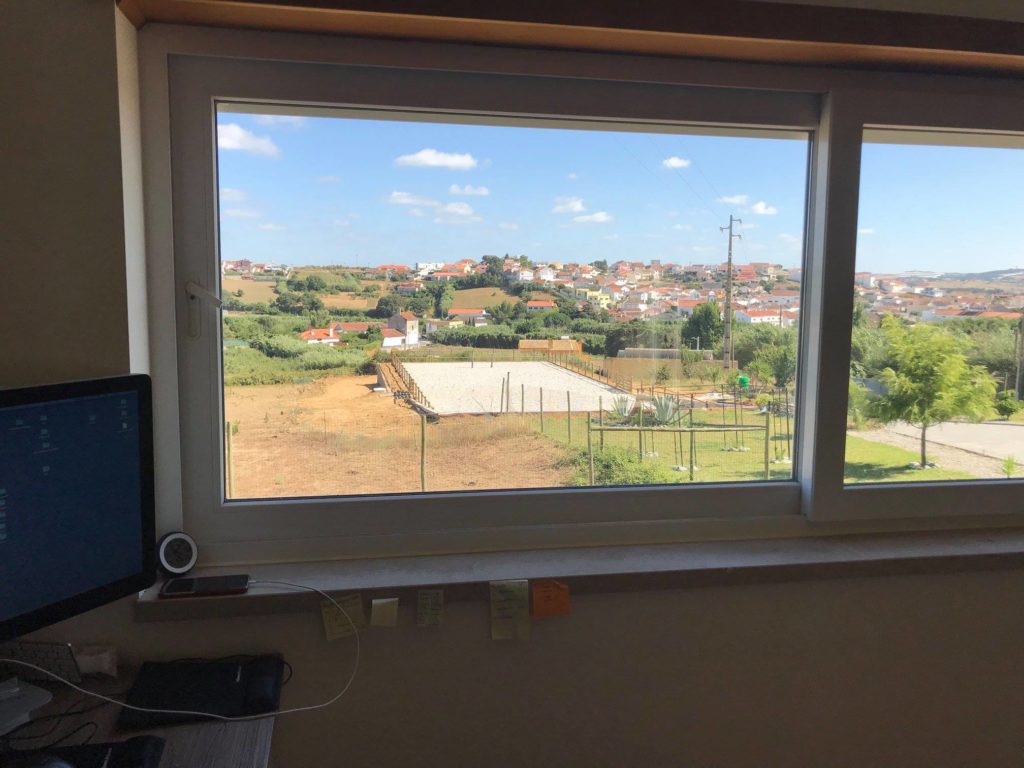 And in this video you can see the 'preparation phase': After the preparation, and after the rain was over mid April 2018, we could start building the riding arena in May.
And in this video you can see the 'preparation phase': After the preparation, and after the rain was over mid April 2018, we could start building the riding arena in May.
2. Leveling the Floor - May 2018
Now the land was very slopey, therefore, they had to lower it on one side and had to raise the other side with the excavated sand. 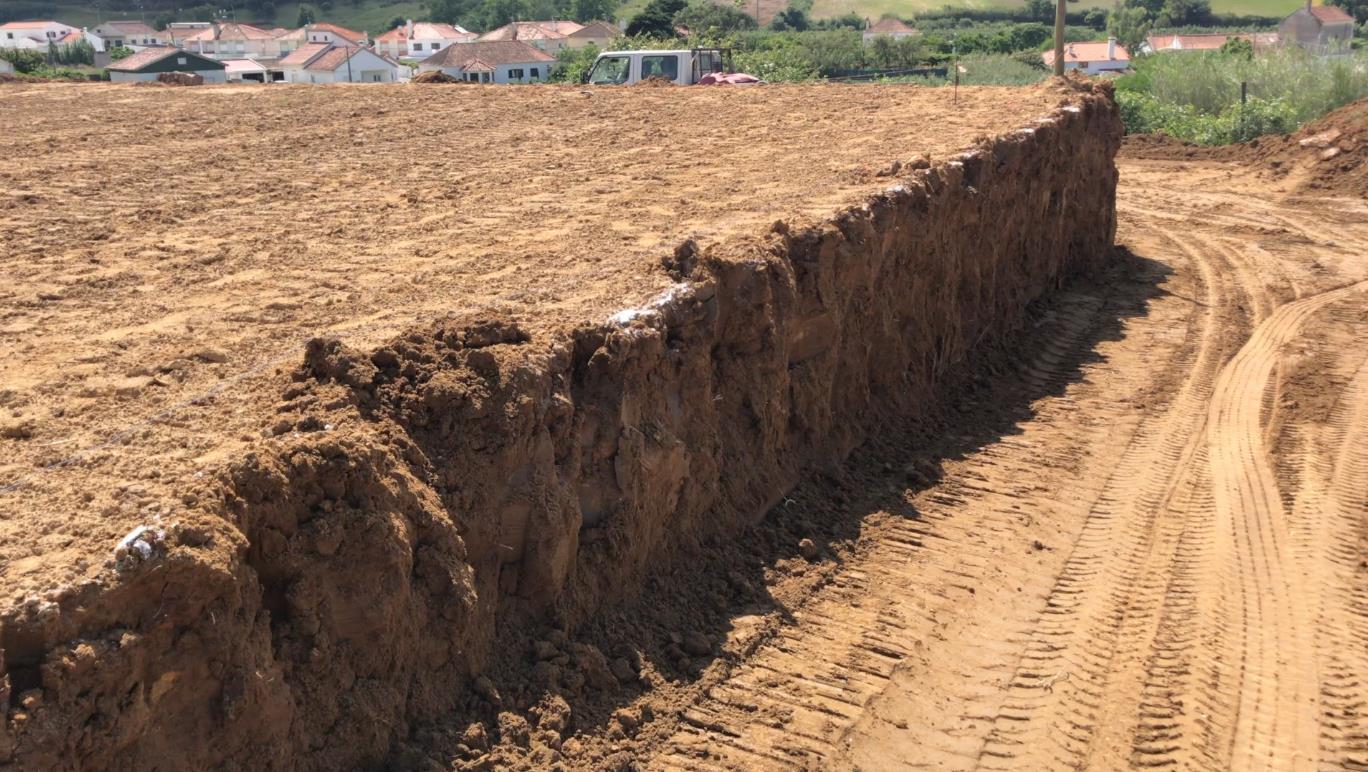 So the rain appeared not to be the only obstacle... The shifting of the sand caused a difference of hight of two meters! So when creating the fundament for the riding arena, we had to adjust the theoretical plan to the practical circumstances. It's the same as in the ST Lab cycle:
So the rain appeared not to be the only obstacle... The shifting of the sand caused a difference of hight of two meters! So when creating the fundament for the riding arena, we had to adjust the theoretical plan to the practical circumstances. It's the same as in the ST Lab cycle:
- Think first
- Act later
- Check the results
- Change your approach
- Repeat until you get what you want:
So when checking the results team who created the floor we realized that their well-created fundament had to be reinforced with a serious stone wall to avoid that the sand would slip away - especially in case of heavy rain.
3. Building The Rear-End Wall - June 2018
The walls at the rear-end were reinforced with a metal skeleton, and the base of this skeleton was also put in concrete. So they dug out a trench to seat the wall in, which they then made solid with a layer of concrete. 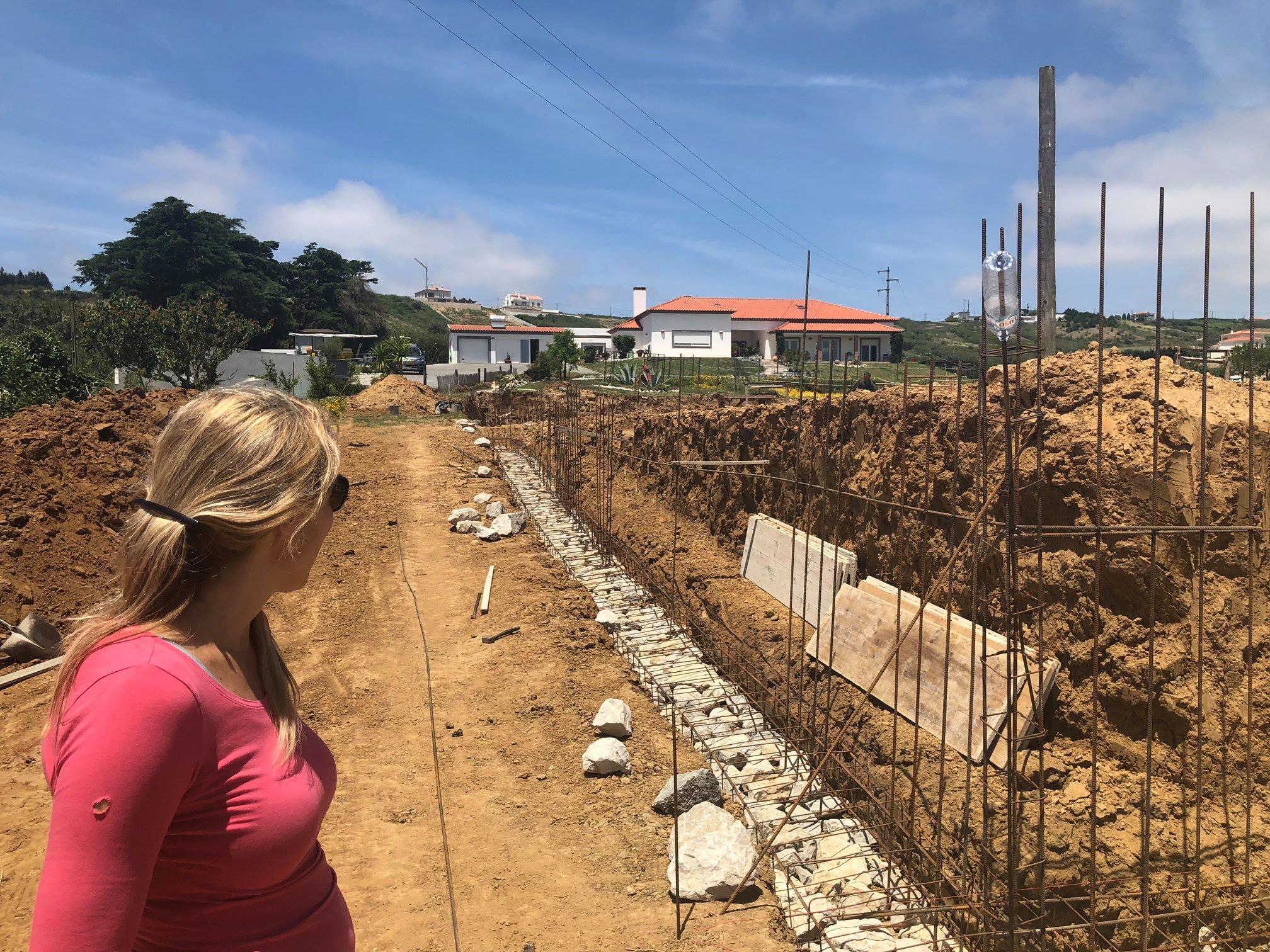
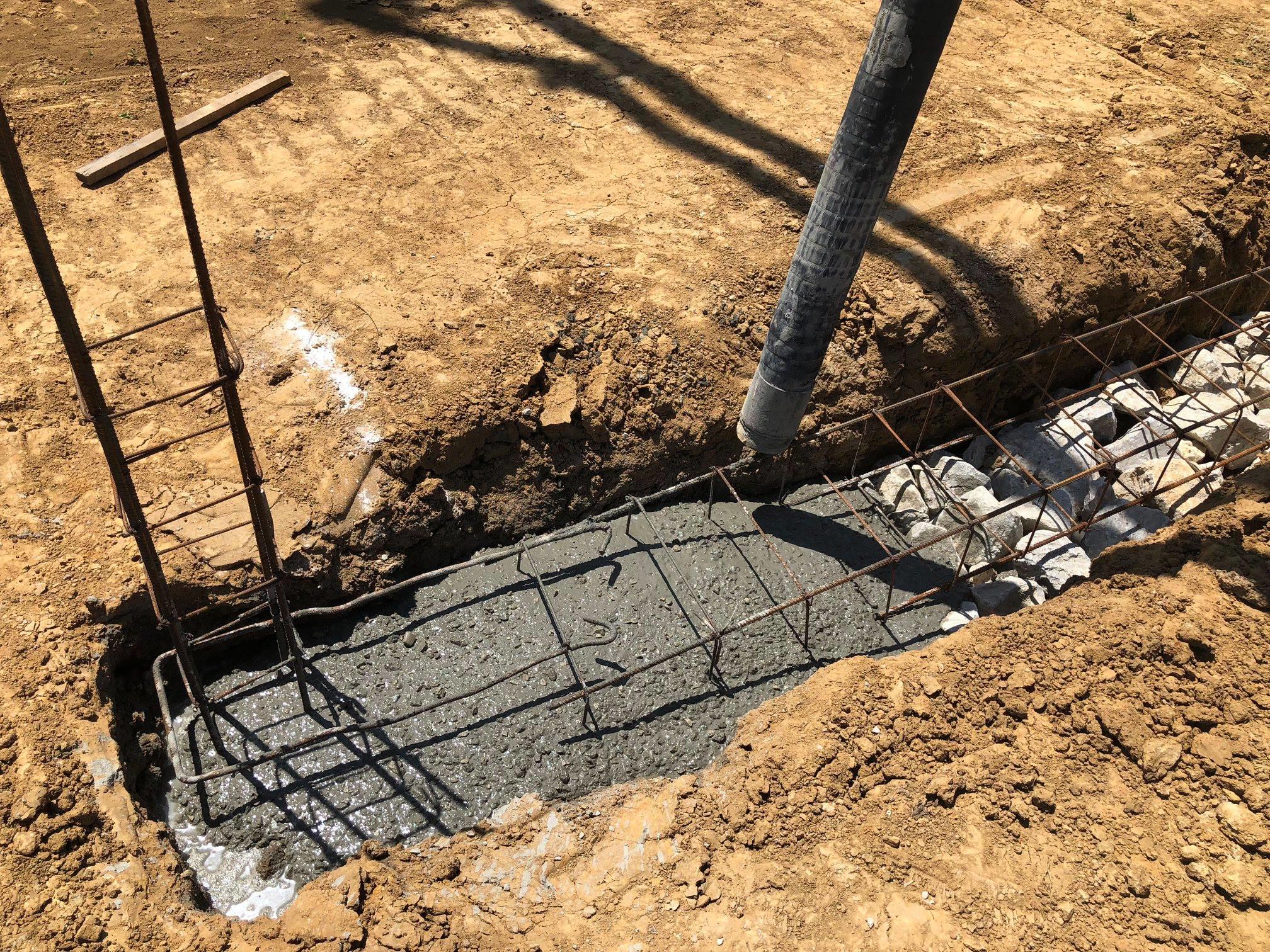 The end result is also called a 'footer'.
The end result is also called a 'footer'.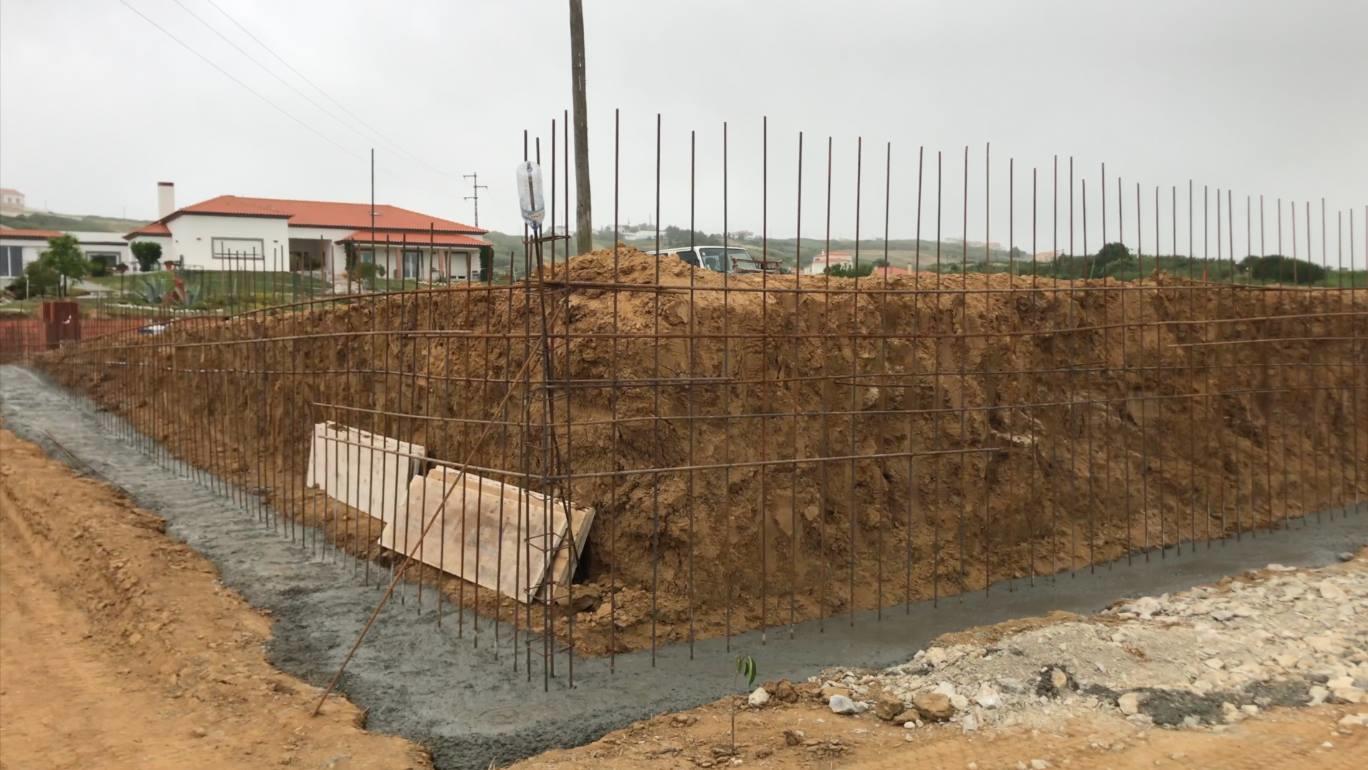 Now we call 'groundwork' the footings under Straightness Training - because, without a solid footer, nothing lasting can come up. That's because even 2mm of uneven setting is enough to cause cracks in the wall. And it's the same with ST! Even 2 mm off track in groundwork is enough to cause cracks in longeing, work in hand, riding or ST at liberty.
Now we call 'groundwork' the footings under Straightness Training - because, without a solid footer, nothing lasting can come up. That's because even 2mm of uneven setting is enough to cause cracks in the wall. And it's the same with ST! Even 2 mm off track in groundwork is enough to cause cracks in longeing, work in hand, riding or ST at liberty.
- Without a good lateral bending, forward down tendency and stepping under of the inside hind leg (LFS) on a small circle, we'll never get a proper LFS on the bigger circle in longeing.
- Without a nice yielding on the inside rein in groundwork, our horse won't give you the bend, then we'll never get our horse searching towards the outside rein in work in hand.
- Without a proper preparation in groundwork, longeing and work in hand, chances are, that we'll have to deal with too much imbalance in riding.
- Of course, liberty is a great place to start, but when it comes to ST at liberty, we want to do the lateral movements, piaffe, and pirouette at liberty. Therefore it might take a lot more development time if we don't shape the quality in groundwork first.
So we should not take groundwork for granted! We should not take footings for granted! That’s why groundwork matters most when it comes to Straightness Training.
Now back to the wall for the riding arena: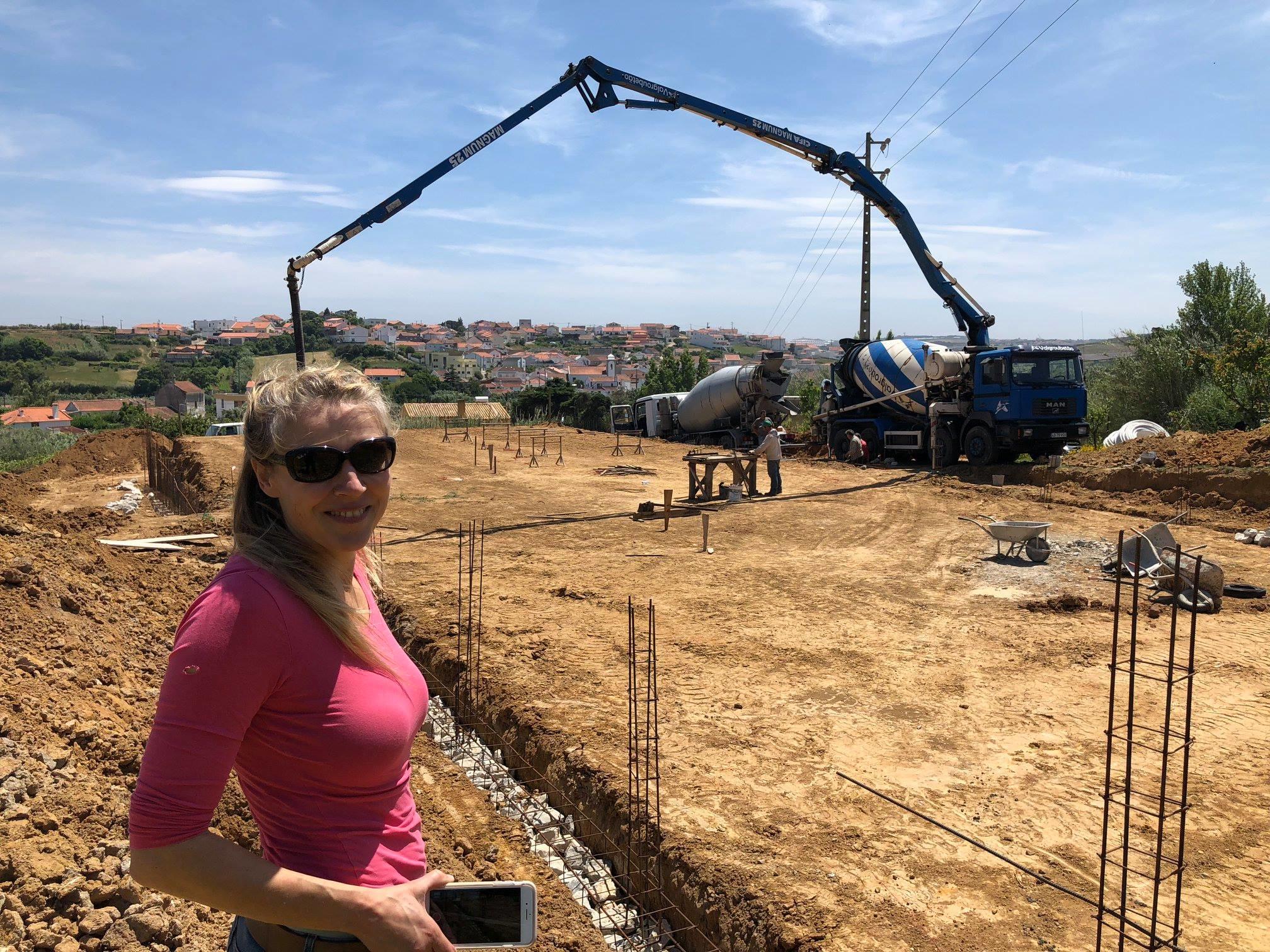 One day, a large cement truck entered the terrain to create the footers and walls of 'reinforced concrete'. So I thought it would be a nice 'obstacle' course for the horses to meet those truck! Therefore, I invited them to check it out... but the grass appeared to be way more interesting 🙃:
One day, a large cement truck entered the terrain to create the footers and walls of 'reinforced concrete'. So I thought it would be a nice 'obstacle' course for the horses to meet those truck! Therefore, I invited them to check it out... but the grass appeared to be way more interesting 🙃:
4. Building The Front-End Wall - June 2018
The front-end wall was created:
- Brick by brick
- Row by row
- All connected by layers of mortar
- And finished with a concrete topping:
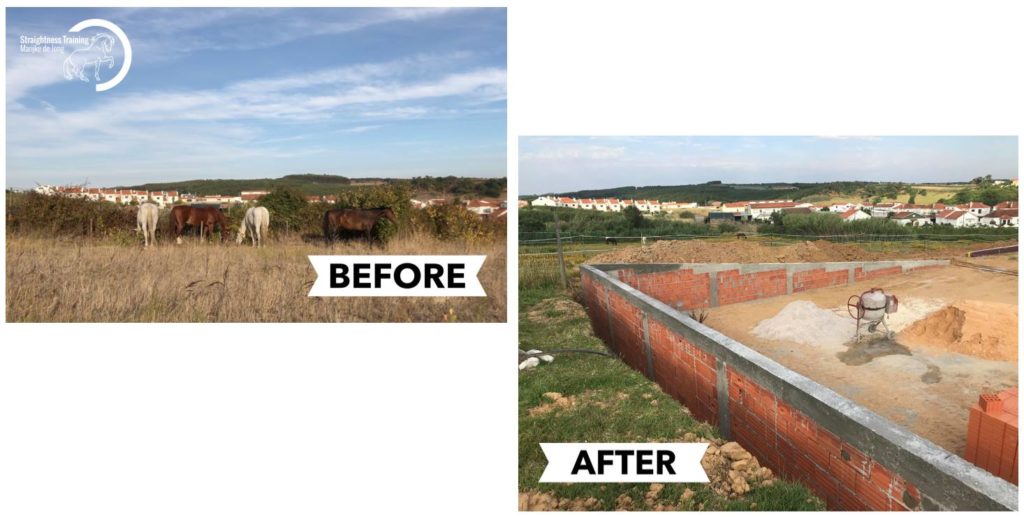 When the frond-end wall was under construction the horses were in our garden to cut the grass. While doing that, they could have a look at the work in progress, but they were not really interested ;)
When the frond-end wall was under construction the horses were in our garden to cut the grass. While doing that, they could have a look at the work in progress, but they were not really interested ;) 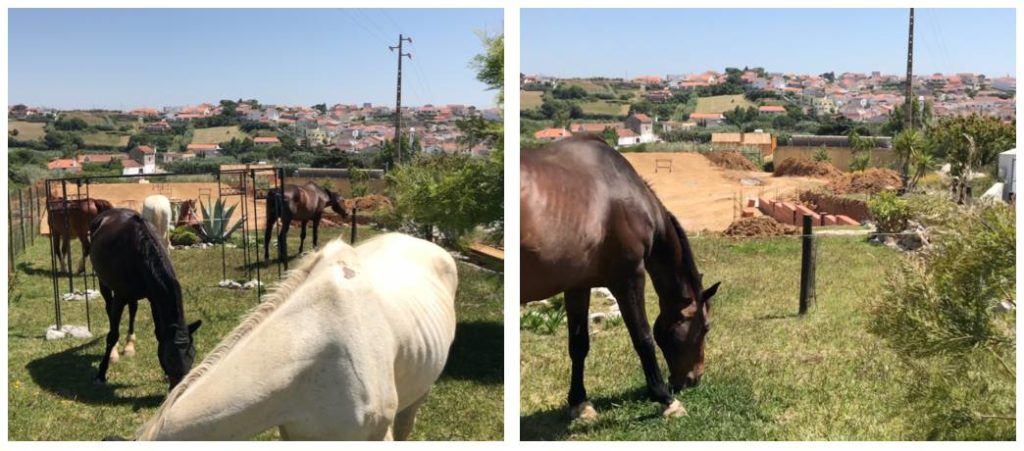 Now the walls were not part of the origional plan, so our architect Helena Machado Morais had to adapt this plan to have a functional wall built. And to have the front-end wall not standing like a massive, concrete, stoney thing in the arena, she designed a sort of double wall and gave it a wonderful natural look with stoney tiles. And the laying of the tiles was a fascinating and absolutely impressive process! It was an intensive and admirable monkish job performed by the professional team of Mr. Jacinto Felix Alexandre, and it required a lot of care, perseverance, patience and time. But it was so worth it because the end result was really fabulous and a true piece of art. And there's the comparison with Straightness Training again: It's easy to have the rough outline of the exercises visible. But the true polishing and artistic refinement of it is a monkish job, which requires a lot of care, perseverance, patience, and time. And also in ST, it's so worth it:
Now the walls were not part of the origional plan, so our architect Helena Machado Morais had to adapt this plan to have a functional wall built. And to have the front-end wall not standing like a massive, concrete, stoney thing in the arena, she designed a sort of double wall and gave it a wonderful natural look with stoney tiles. And the laying of the tiles was a fascinating and absolutely impressive process! It was an intensive and admirable monkish job performed by the professional team of Mr. Jacinto Felix Alexandre, and it required a lot of care, perseverance, patience and time. But it was so worth it because the end result was really fabulous and a true piece of art. And there's the comparison with Straightness Training again: It's easy to have the rough outline of the exercises visible. But the true polishing and artistic refinement of it is a monkish job, which requires a lot of care, perseverance, patience, and time. And also in ST, it's so worth it:
Once the walls were finished, it was time to build the fence:
5. Building The Fence - July 2018
Now because the rear-end is 2 meters high, we needed a fence, to avoid the risk of falling off, and to create more symmetry, we decided to have a fence on all four sides. We chose pine wood, because this type of fence fits perfectly into the landscape. The wood is impregnated so it is very sustainable wood, and with 50 year guarantee not to rot, the fence will last year after year without maintenance, so that's perfect: 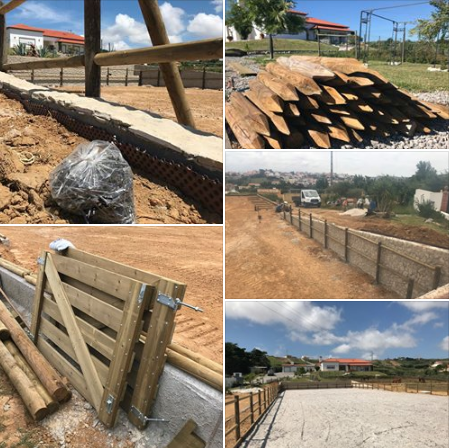
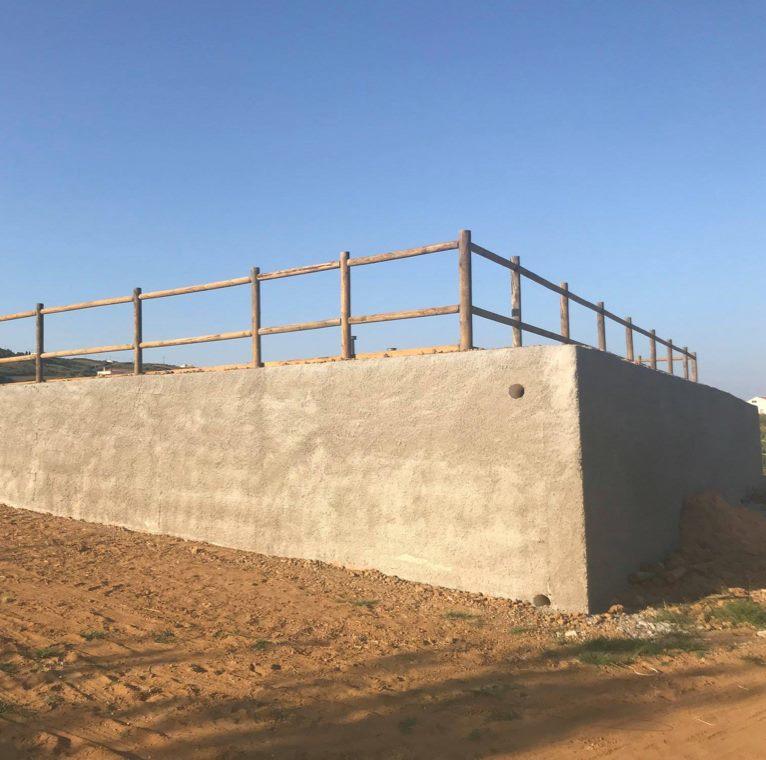
After the fence was completed, the final step could be made:
6. Integrating The Ebb & Flow System - July 2018
The system is a Dutch invention and creates an optimum moisture condition in the floor. The terminology Ebb & Flow comes from the Dutch language “Eb & Vloed“ which means low and high tide:
- It consists of a series of trenches with drain pipes ('canals') which are installed under the sand cover.
- The water is kept in the arena by sheets of heavy-duty plastic which have been laid before the pipes and sand are installed.
- With a sump next to the arena the water level in the sand can be set, and the capillary effect of the sand will provide an even water level in the arena.
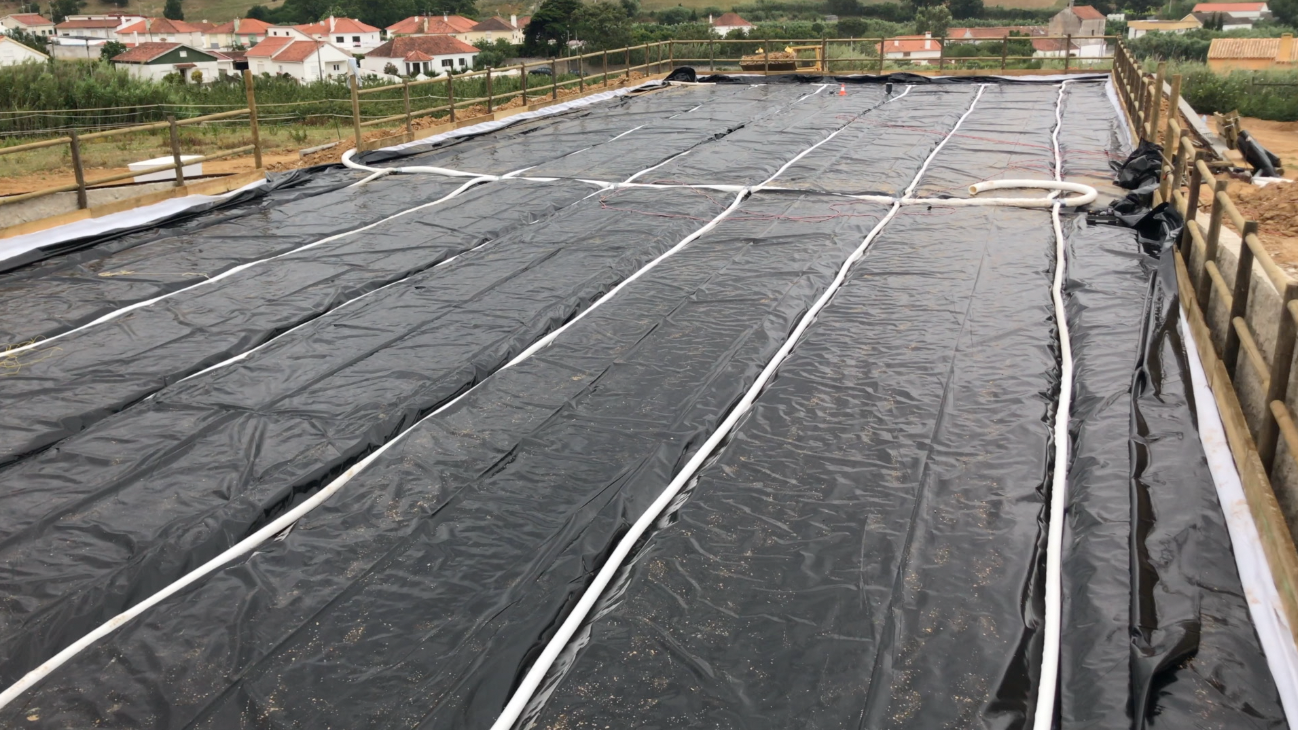 The combination of the drainage pipes - with the little holes to let the water through - and the capillary effect of the sand will provide an even water level in the arena:
The combination of the drainage pipes - with the little holes to let the water through - and the capillary effect of the sand will provide an even water level in the arena:
- If the floor is too wet because of heavy rain, excess water is extracted completely automatically through the drainage pipes.
- If it is too dry, it is supplied with the necessary water, also automatically.
While nature delivers high and low tide to the beach, the Ebb & Flow system can regulate the water in the riding arena, creating continuous perfect moisture at every inch. So the benefits of this system are:
- Always an even riding surface with a constant basic elasticity
- 100% availability of the arena in all weather: the arena will never be dusty and will never flood
- The arena can always be ridden on also after heavy rain.
- No sprinklers required from above.
- Automatic and optimum moisture condition and water level from below.
- Less water required to keep the surface in good condition.
- No dust formation.
- You can regulate the rigidity of the floor, making it harder or softer according to the needs.
So the 'Ebb & Flow' technology incorporates an underground drainage, which means the irrigation system is integrated in the floor itself, causing substantially lower water intakes.
7. Before/After Pictures
The development of the arena had very similarities with Straightness Training. For example, it's fascinating to see how something was built op from totally scratch, and that by just taking a series of small actions, eventually a big result is accomplished. Now there's a Zen story about a Buddhist monk who climbed a range of mountains and was asked how he did it:
He said, that he did it one step at a time.
And he strongly believed that the most important step was the next step:
“If you don't step forward you will always be in the same spot...“ he said.
It's the same with Straightness Training: When we start learning something new, it’s easy to become daunted by everything we have to do to reach our final goal. But we should not get overwhelmed by the bigger picture and just focus on the very next step we need to take. The first thing is that we have to believe that we can do it. Then, instead of trying to make big, quick changes in a short amount of time, we should just make small improvements every day that will gradually lead to the change we want. 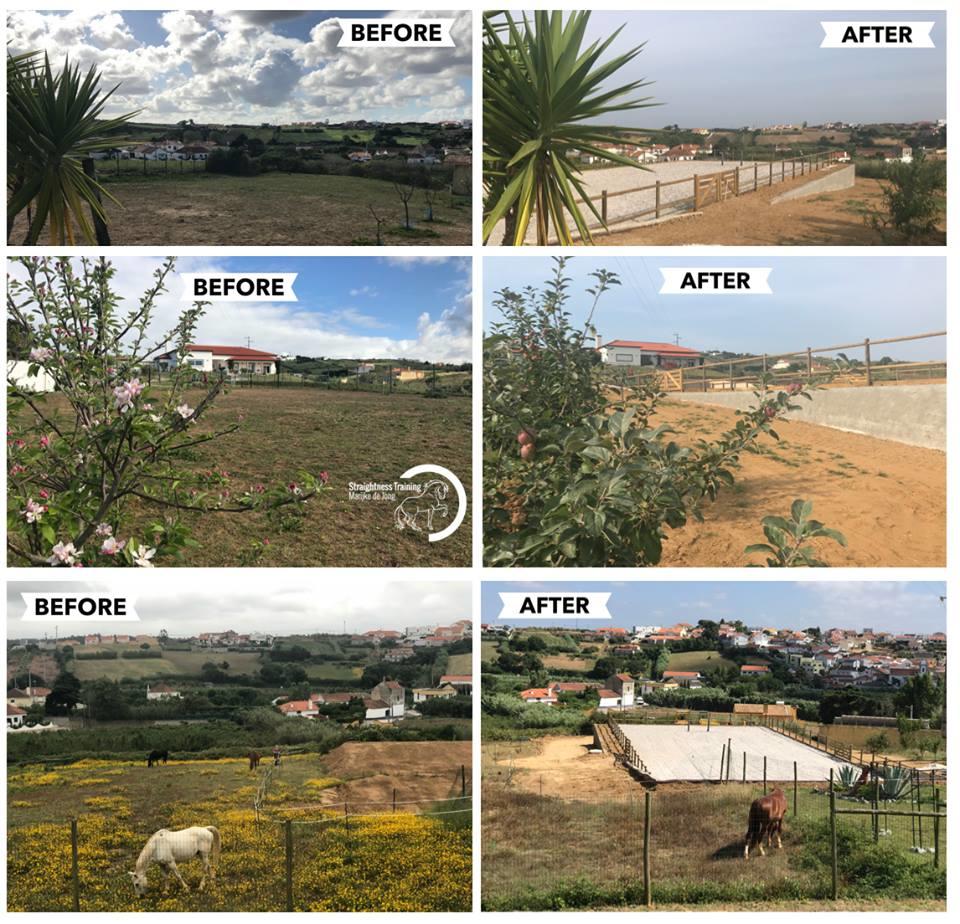
So those little improvements add up. When we improve a little each day, eventually big things occur. Not tomorrow, not the next day, it may take weeks or even months - as with this riding arena process - but eventually, a big gain is made.
8. Complete Overview Video
In this video, you can see a complete overview 'from scratch to end-product' by adding up those little improvements:
9. Back on Track - August 2018
Finally, I could start training again! And this is a video of the very first training session. Now about this 'training', it was not really about 'teaching' or 'optimizing' quality, but an 'observational' training, to observe their body, mind, heart and soul and their opinion about the new working environment. Because in Straightness Training we use the philosophy 'Observe First, Produce Later'. So at first, I let the horses 'observe' their new working environment by just walking around the fence, both to the left and right. And when I sensed that they felt comfortable and at ease, I started to check their bodies: I checked the LFS, and if I could reach the inside hind leg, and the outside hind leg. 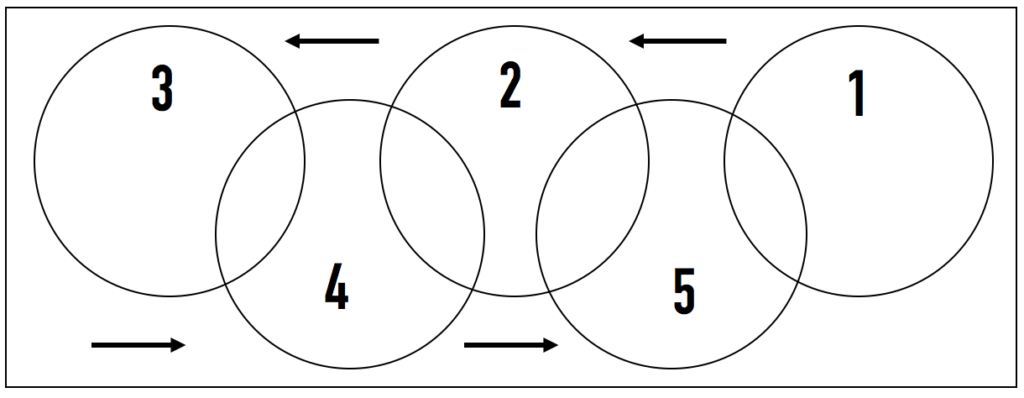 And I asked for a bit of trot and canter to observe their gaits and movements. While doing this, I spiraled a sort of through the arena, so that they could observe the whole outdoor. And I didn't put much contact on the line, to be able to check their curling around me from 'the inside out' (observing), and not making them turn from the 'outside in' (producing). Now I trained all of my horses, but Marc only filmed some snippets of Romanesque and Prince Elmelund, and a little snapshot from El Blanco taken from inside the house, but hopefully, it gives you a sort of an impression of the first training: Now arriving here at the 'end-result' of this whole 'riding arena construction' journey, let's go back to my 'confession':
And I asked for a bit of trot and canter to observe their gaits and movements. While doing this, I spiraled a sort of through the arena, so that they could observe the whole outdoor. And I didn't put much contact on the line, to be able to check their curling around me from 'the inside out' (observing), and not making them turn from the 'outside in' (producing). Now I trained all of my horses, but Marc only filmed some snippets of Romanesque and Prince Elmelund, and a little snapshot from El Blanco taken from inside the house, but hopefully, it gives you a sort of an impression of the first training: Now arriving here at the 'end-result' of this whole 'riding arena construction' journey, let's go back to my 'confession':
10 Months Out of the Running
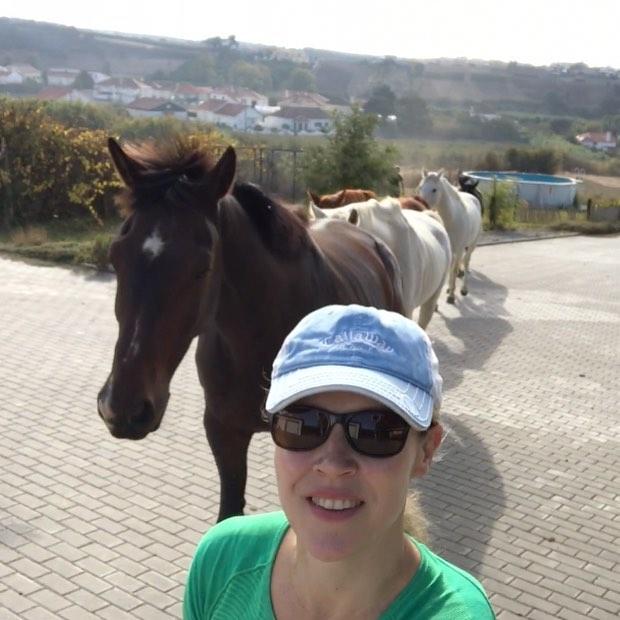 So for 10 months, my horses and I have not been 'doing' Straightness Training, we've experienced he house of just 'being' together. Fortunately, they have a good basic condition because they are 24/7 out and can move through several areas. But of course they lost some muscles, this means:
So for 10 months, my horses and I have not been 'doing' Straightness Training, we've experienced he house of just 'being' together. Fortunately, they have a good basic condition because they are 24/7 out and can move through several areas. But of course they lost some muscles, this means:
- I will be back to square one...
- There's some work to do to get them back on track...
- Basically, I will start from scratch...
- First with groundwork and longeing...
- And then, after a couple of weeks, with work in hand...
- And finally riding.
Now I'm not the only one facing setbacks and challenges. As long as I teach - for decades - students of mine have been experiencing special personal circumstances and setbacks. And all of us strive to have a sort of orderly and peaceful lives.
But we all experience different incidents in our lives that might turn our world upside down for a while - and the top 5 is:
- The death of a loved one - human or animal
- Untimely illnesses or getting injured
- Getting married or divorced
- Getting children or loss of a job
- Moving to a new home
Now, maybe you experienced special personal circumstances with your horse, family, job, study, or other areas in your life as well.
Perhaps you're also back to square one for several reasons.
Or you too have to go back to basics because of what you've been through.
However, if you're - just like me - ready to get back in the game, then this might be of interest to you:

